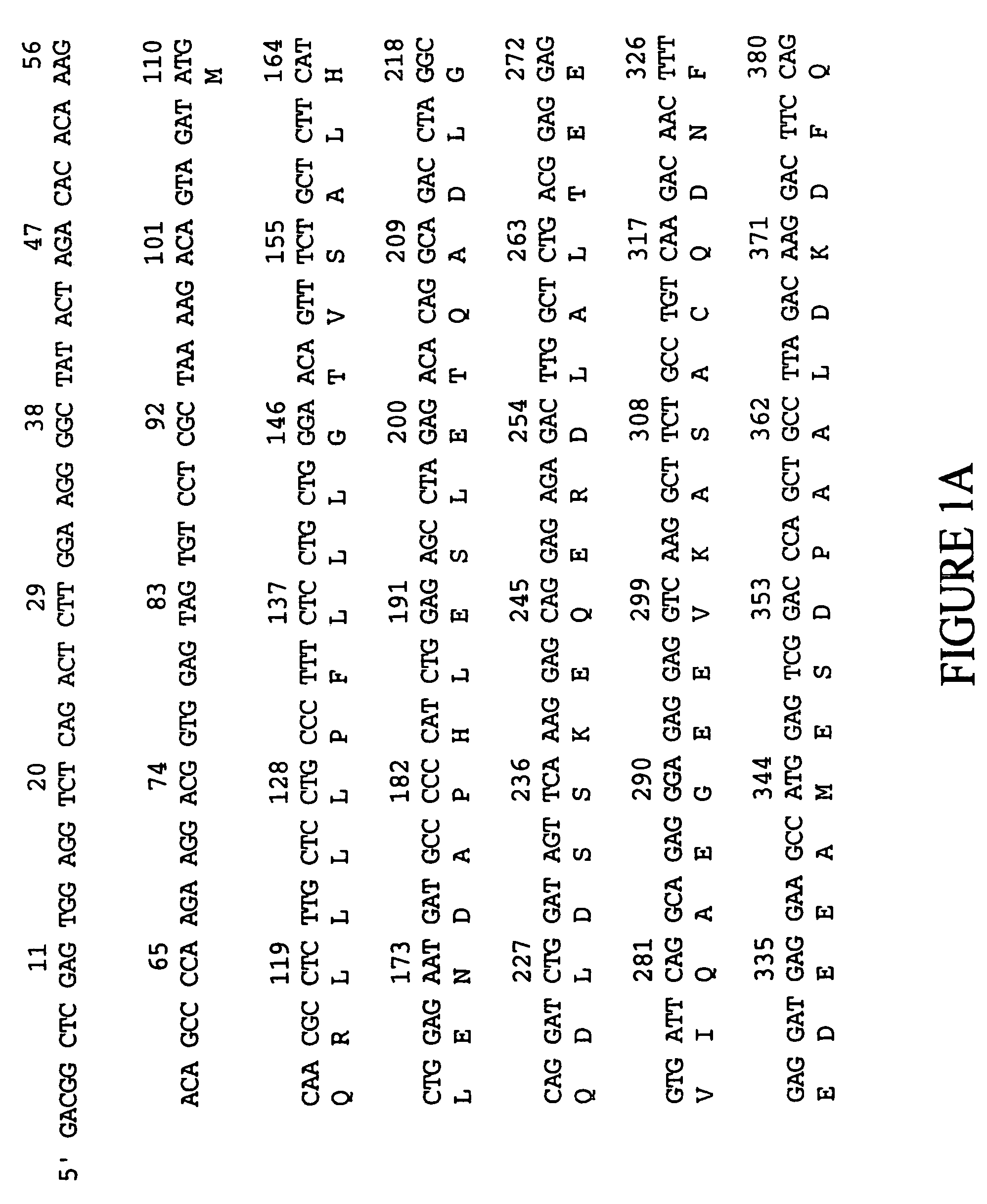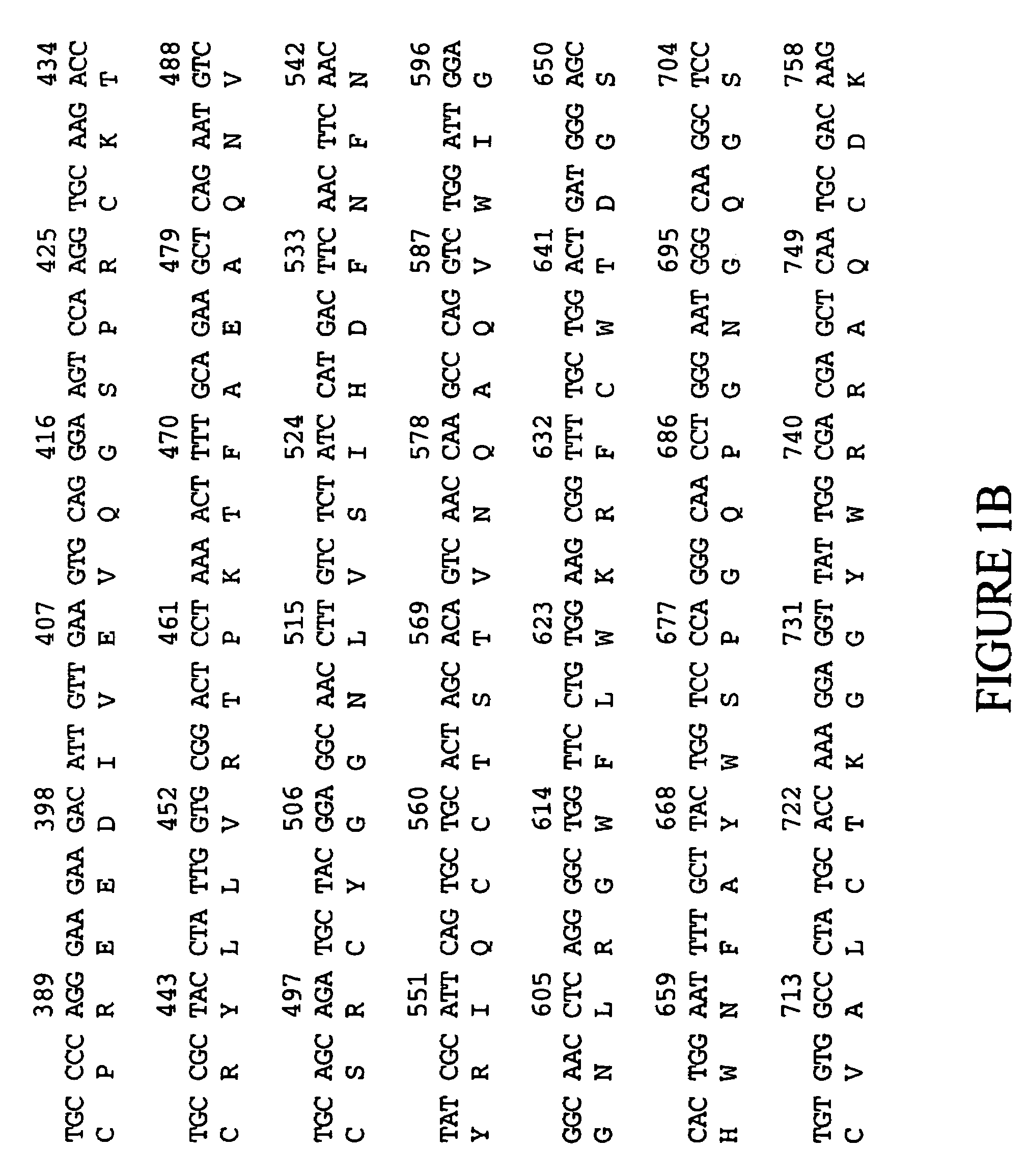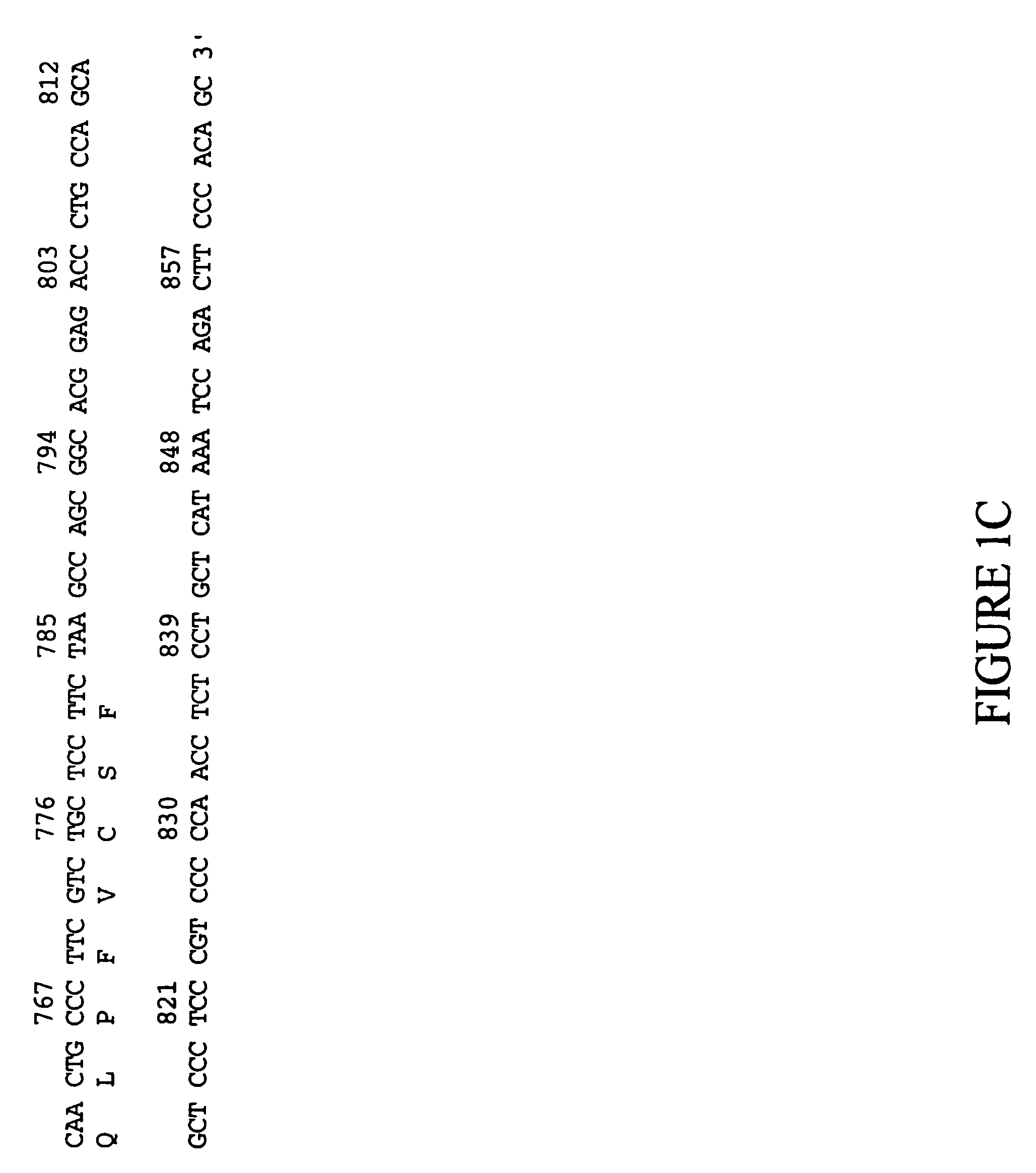Human eosinophil-derived basic protein
a human eosinophil and basic protein technology, applied in the field of nucleic acid and amino acid sequences of human eosinophils, can solve the problems of cytotoxic proteins disrupting membrane surfaces and lyse cells, and edbps may also damage host tissues
- Summary
- Abstract
- Description
- Claims
- Application Information
AI Technical Summary
Benefits of technology
Problems solved by technology
Method used
Image
Examples
examples
I Construction of cDNA Libraries
[0167]Mononuclear cells were obtained from the umbilical cord blood of 12 individuals and were cultured in the presence of IL-5 for 12 days. The cells were homogenized and lysed using a Brinkmann Homogenizer Polytron PT-3000 (Brinkmann Instruments, Westbury, N.J.) in guanidinium isothiocyanate solution. The lysate was centrifuged over a 5.7 M CsCl cushion using an Beckman SW28 rotor in a Beckman L8–70M Ultracentrifuge (Beckman Instruments) for 18 hours at 25,000 rpm at ambient temperature. The RNA was extracted with acid phenol pH 4.7, precipitated using 0.3 M sodium acetate and 2.5 volumes of ethanol, resuspended in RNAse-free water, and DNAse treated at 37° C. The RNA extraction was repeated with acid phenol pH 4.7 and precipitated with sodium acetate and ethanol as before. The mRNA was then isolated using the Qiagen Oligotex kit (QIAGEN, Inc., Chatsworth, Calif.) and used to construct the cDNA library.
[0168]The mRNA was handled according to the rec...
PUM
| Property | Measurement | Unit |
|---|---|---|
| Tm | aaaaa | aaaaa |
| Tm | aaaaa | aaaaa |
| pH | aaaaa | aaaaa |
Abstract
Description
Claims
Application Information
 Login to View More
Login to View More - R&D
- Intellectual Property
- Life Sciences
- Materials
- Tech Scout
- Unparalleled Data Quality
- Higher Quality Content
- 60% Fewer Hallucinations
Browse by: Latest US Patents, China's latest patents, Technical Efficacy Thesaurus, Application Domain, Technology Topic, Popular Technical Reports.
© 2025 PatSnap. All rights reserved.Legal|Privacy policy|Modern Slavery Act Transparency Statement|Sitemap|About US| Contact US: help@patsnap.com



